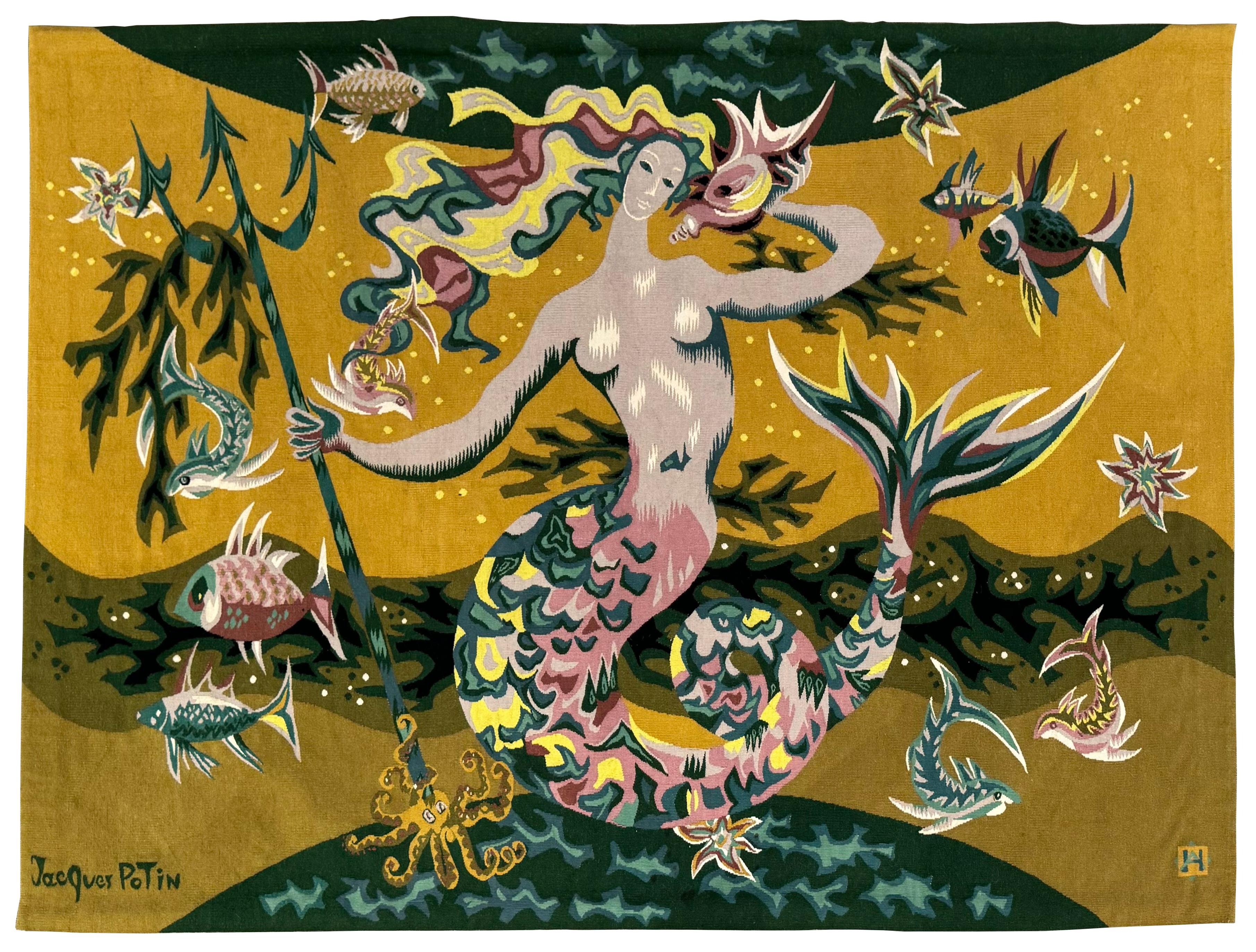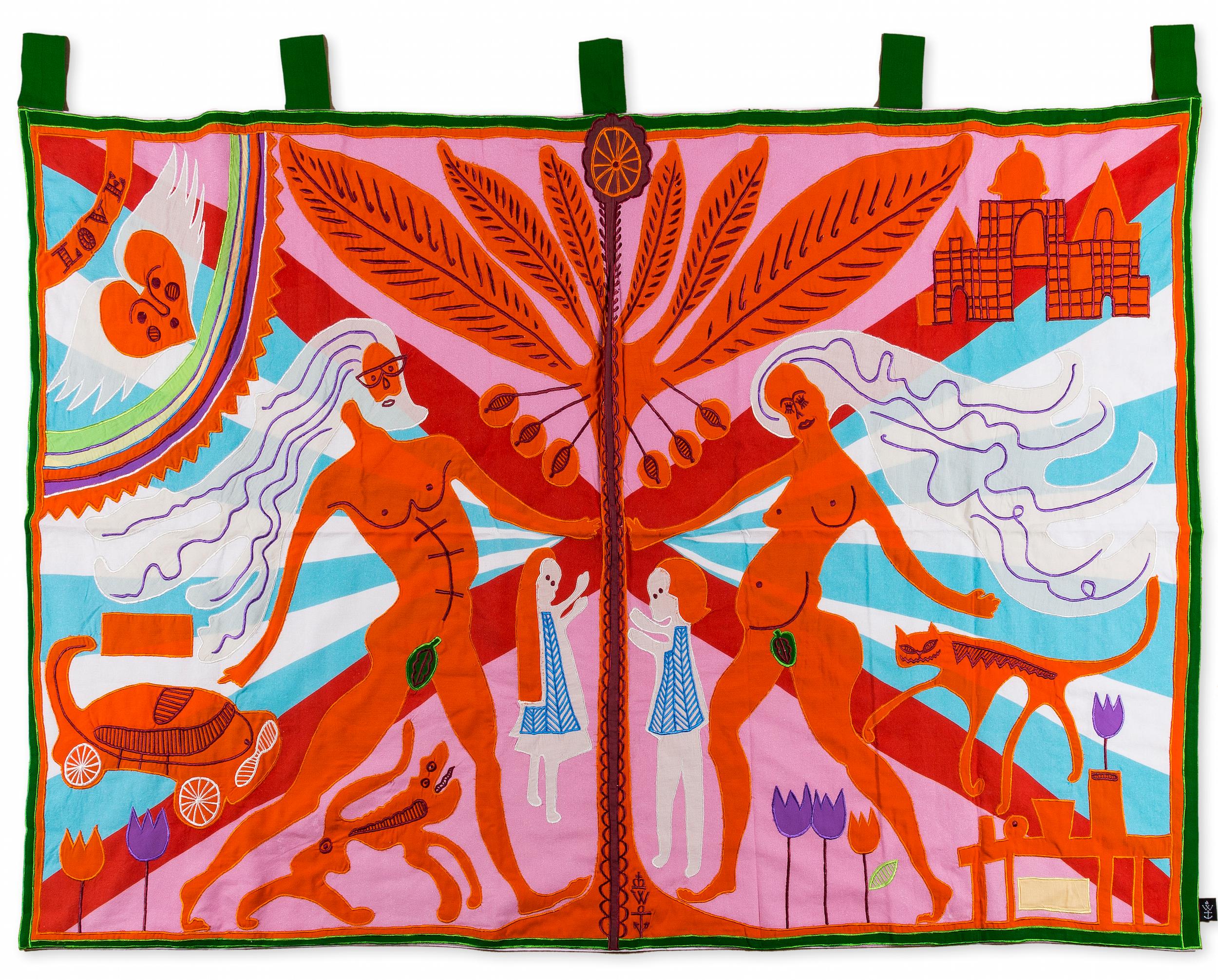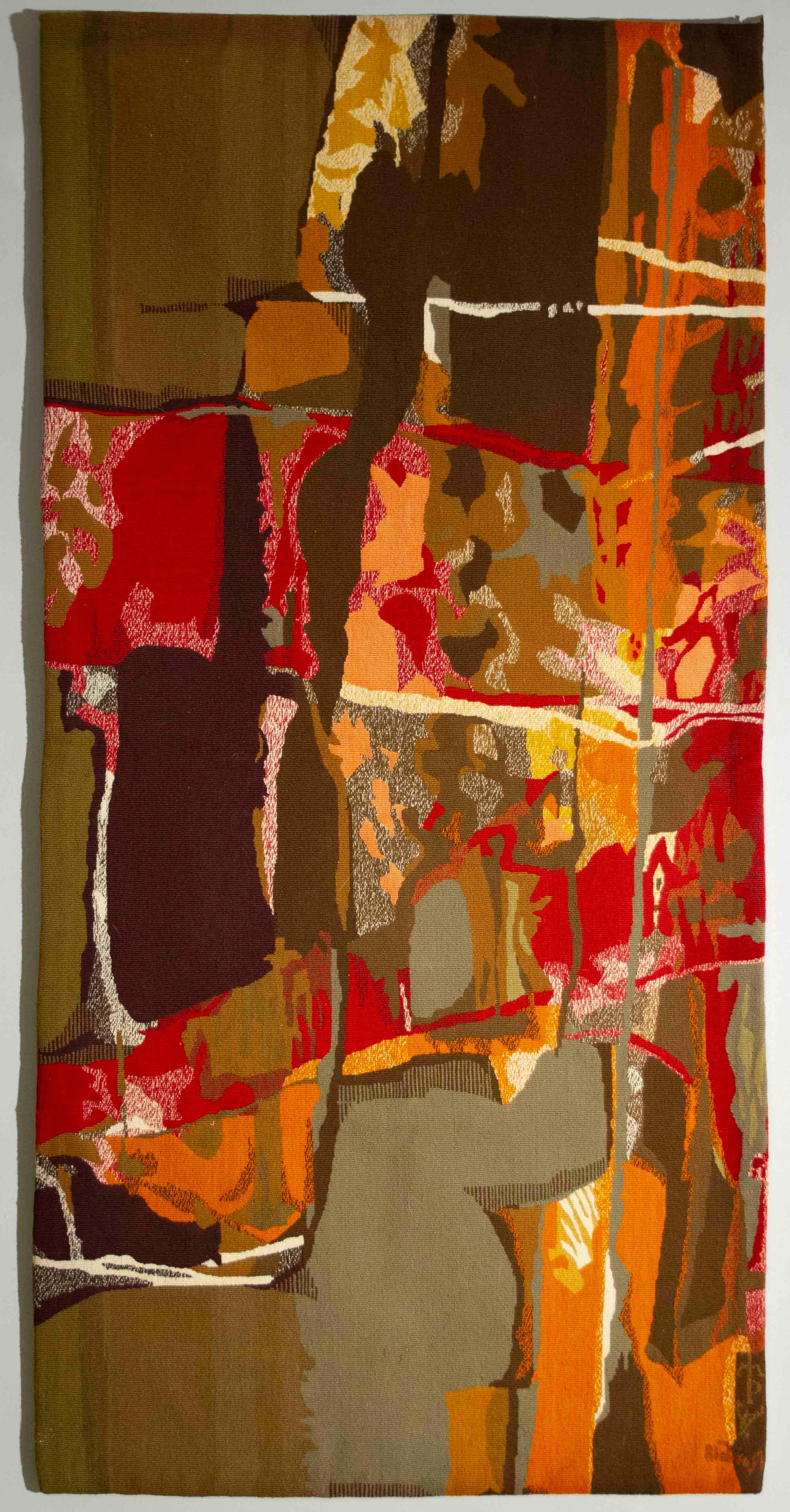Items Similar to Framed Mid 20th Century Embroidery - Flora
Want more images or videos?
Request additional images or videos from the seller
1 of 6
UnknownFramed Mid 20th Century Embroidery - FloraUnknown
Unknown
About the Item
Curvaceous art nouveau flowers have been carefully embroidered with colour threat to complete is lavish botanical motif. A mix of stitching patterns have been used by the artist to bring to life each floral element. Unsigned. The sample has been well presented in an attractive gilt slip and reeded wood frame. On linen.
- Creation Year:Unknown
- Dimensions:Height: 24.61 in (62.5 cm)Width: 20.67 in (52.5 cm)
- Medium:
- Period:
- Condition:The embroidery itself is in a very good condition for its age. The gilt slip is showing some signs of wear with a crack to the lower left corner and marks on most sides. The wooden reeded frame is in fine condition.
- Gallery Location:Corsham, GB
- Reference Number:
About the Seller
4.9
Platinum Seller
These expertly vetted sellers are 1stDibs' most experienced sellers and are rated highest by our customers.
Established in 2010
1stDibs seller since 2018
838 sales on 1stDibs
Typical response time: 6 hours
- ShippingRetrieving quote...Ships From: Corsham, United Kingdom
- Return PolicyA return for this item may be initiated within 30 days of delivery.
More From This SellerView All
- 20th Century Embroidery - Peacocks And PeoniesLocated in Corsham, GBAn exquisite 20th Century embroidery using the most beautiful silk threads. The colours of the threads a wonderfully bright and the flat, directional stitches give the embroidery mov...Category
21st Century and Contemporary More Art
MaterialsTapestry
- Late 19th Century Embroidery - A Timeless LoveLocated in Corsham, GBA charming petit point needlework from the late 19th Century, showing a heartwarming scene of an elderly couple sitting in a close embrace in their home with the cat and dog at their...Category
19th Century More Art
MaterialsTapestry
- Framed 20th Century Embroidery - Parrot Tulips & PetalsLocated in Corsham, GBA vibrant floral & botanical embroidery depicting parrot tulips intertwined with red berries and smaller spring flowers. Presented in a stunning o...Category
20th Century More Art
MaterialsTapestry
- American Early 19th Century - Silkwork Picture with FiguresLocated in Corsham, GBRare American silkwork picture. Presented in a charming gilt-effect frame with glazing. On linen.Category
Early 19th Century More Art
MaterialsTapestry
- Framed 19th Century Embroidery - Petit Point Embroidery and BeadworkLocated in Corsham, GBA fine survival, this original 19th Century petit point embroidery with extensive beadwork shows two figures surrounded by a scrolling foliate border. Well-presented in a deep gilt w...Category
19th Century More Art
MaterialsTapestry
- Early 19th Century Embroidery - Patriarchal BlessingLocated in Corsham, GBA finely detailed, early 19th Century needlepoint scene showing a family gathering round the bed of an elderly man as he blesses the children. The artwork is picked out in beautiful ...Category
19th Century More Art
MaterialsTapestry
You May Also Like
- Marco, Mid-Century Polish Tapestry by Zofia ButrymowiczLocated in Wilton, CTZofia Butrymowicz (1904-1987, Warsaw, Poland) was one in a select group of Polish textile artists who were first introduced in Chicago, USA in the 1970s by legendary dealers Anne and Jacques Baruch. Butrymowicz's body of work continues to influence the fiber art world to this day. "New experiments in art have always been of interest to me" Butrymowicz once observed, "whether I agree with them or not, and therefore I never pass by and I am never indignant at any expression in art. I strongly believe that in the wide range of experiments there will also be some elements of the development of culture." During the post-war period, when the countries of Eastern Europe were locked down behind the Iron Curtain, weavers there found materials in short supply. As a result, many of these artists turned to unconventional materials such as metal, paper and reeds. Zofia Butrymowicz, of Poland, recognized for innovative works in 60s and 70s, used heavy, irregular wools, barely spun at all. In 1969, she visited Canadian weaver, Mariette Rousseau-Vermette and her husband, painter and ceramicist, Claude Vermette, outside Montreal where the couple lived and worked. Zofia and Mariette had both been participants in International Tapestry Biennials in Lausane, Switzerland in the 60s and in Wall Hangings at the MoMA in New York in 1969. Butrymowicz stayed with the Vermettes for several months, using Mariette’s looms to create tapestries that were displayed with Claude’s ceramics at a local gallery. Butrymowicz used wool from Mariette’s source. Mariette was particular about the color and intensity of her wool — she worked with technicians to perfect the spinning and dyeing so that the wool had a silky luster and dyed “more beautifully” than mechanically spun wool. The wool was a marked departure from the material Butrymowicz had access to in Poland. She “painted” her weavings with colors and shadings of yarns, including only a shimmering suggestion of a shape, often a circle, as she had done in the past, but the glisten and sumptuousness of the yarn in these works set them apart from her previous weavings. Selected exhibitions: Central Museum of Textiles, Lodz, Poland; Museum of Contemporary Art, Chicago, Illinois; National Museum, Poznan, Poland; National Museum, Warsaw, Poland; Skopje Museum of Contemporary Art, Poland; Exempla, Munich, Germany; Museum of Modern Art, Pasadena, California; Pierre Pauli...Category
1960s Modern Abstract Sculptures
MaterialsFabric, Textile, Tapestry, Wool
- Classic LOVEBy (After) Robert IndianaLocated in Winterswijk, NL"Classic Love" by Robert Indiana is a tapestry of the artist's iconic painting "LOVE", which was created in 1964 as a Christmas card motif for the Museum of Modern Art in New York City and has since become one of the most famous contemporary works. This hand-knotted tapestry...Category
Early 2000s Modern More Art
MaterialsWool, Tapestry
- Le SiréneBy Jacques PotinLocated in Rancho Santa Fe, CASigned lower left Titled and signed verso on label Tapisserie d’Aubusson, woven by Hamot, France This item is in our New York City warehouse and can be viewed by appointment.Category
20th Century Modern More Art
MaterialsTapestry, Wool
- Sticks and Stone No. 2Located in Boston, MAPima cotton broadcloth with reactive dyes, silk batting, cotton backing. Raised in the American South, Rodger Blum received a BFA at North Carolina University of the Arts and an MFA...Category
21st Century and Contemporary Abstract More Art
MaterialsTapestry, Cotton, Silk, Dye
- Marriage Flag -- Embroidery, Tapestry, Contemporary Art by Grayson PerryBy Grayson PerryLocated in London, GBMarriage Flag, 2018 Grayson Perry Handmade cotton fabric and embroidery appliqué flag From the edition of 45 Published by Victoria Miro Gallery, London Multiple: 97 × 143 cm (38....Category
2010s Contemporary More Art
MaterialsTapestry
- Mathieu Matégot - Sans titre, tapestry, french, modern, abstract, wool, designBy Mathieu MatégotLocated in London, GBMathieu Matégot (1910-2001) Sans titre c.1950s wool tapestry, Manufactura de Tapeçarias de Portalegre 150 x 70 cm signed ‘Matégot’ and with the Manufactura de Tapeçarias de Portalegre monogram (lower right) Price: $11,000 USD Provenance: Barry Friedman Ltd, New York (stock no. BF21324) Notes: Mathieu Matégot was a Hungarian-born French designer, architect and artist. After studying at Budapest's School of Fine Arts in 1929, Matégot travelled across Italy and the USA until settling in Paris in 1931 where he worked as a set designer, window dresser and tapestry maker. Matégot volunteered for the French resistance at the start of the Second World War, only to be captured by the Nazis. A dreadful fate for most, however, it was during his time as a prisoner of war that the artist discovered metalworking techniques (such as Rigitulle) which he later patented and became renowned for. Upon his release, Matégot was awarded French citizenship. After the war, the artist's interest in tapestry was renewed after being introduced to contemporary tapestry revivalist, Jean Lurçat. However, in order to make ends meet, Matégot pursued furniture design; he established a workshop in Paris and dedicated his time to translating the groundbreaking metal techniques into popular handcrafted objects. In 1959, Matégot abandoned furniture design and focused exclusively on his passion for abstract tapestries. He continued his work as a pioneer of French Modern tapestry...Category
1950s Abstract More Art
MaterialsTapestry
Recently Viewed
View AllMore Ways To Browse
Midcentury Art Framed
Midcentury Art With Frame
Mid Century Framed Art
Mid Century Flower Art
Mid Century Wood Art Frame
Art Nouveau Flower
Unsigned Mid
Vintage Embroidery Embroidery
Vintage Embroideries
Vintage Embroidery
Reeded Wood
Artist Flora
Flora Vintage
Vintage Floral Framed Art
Vintage Framed Floral Art
Flower Embroidery
Vintage Art Nouveau Patterns
Stitches Used In Embroidery




